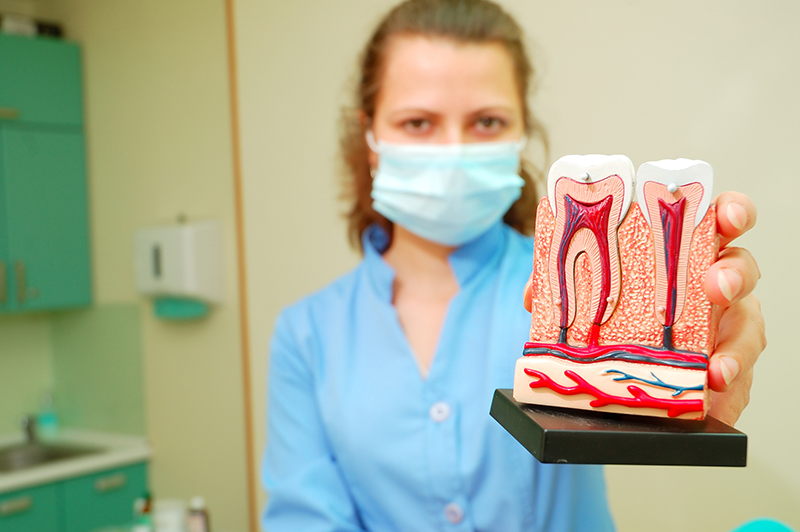On Wikipedia
The procedure is often complicated, depending on circumstances, and may involve multiple visits over a period of weeks.
Before endodontic therapy is carried out, a correct diagnosis of the dental pulp and the surrounding periapical tissues is required. This allows the endodontist to choose the most appropriate treatment option, allowing preservation and longevity of the tooth and surrounding tissues. Treatment options for an irreversibly inflamed pulp (irreversible pulpitis) include either extraction of the tooth, or removal of the pulp (tooth).
Removing the infected/inflamed pulpal tissue enables the endodontist to help preserve the longevity and function of the tooth. The treatment option chosen involves taking into account the expected prognosis of the tooth, and patient’s wishes. A full history is required (which includes the patient’s symptoms and medical history), along with a clinical examination (both inside and outside the mouth), and the use of diagnostic tests.
There are several diagnostic tests that can aid in the diagnosis of the dental pulp and the surrounding tissues. These include:
·Palpation (this is where the tip of the root is felt from the overlying tissues to see if there is any swelling or tenderness present)
·Mobility (this is assessing if there is more than normal movement of the tooth in the socket)
·Percussion (TTP, tender to percussion; the tooth is tapped to see if there is any tenderness)
·Transillumination (shining a light through the tooth to see if there are any noticeable fractures)
·Tooth slooth (this is where the patient is asked to bite down upon a plastic instrument; useful if the patient complains of pain on biting as this can be used to localise the tooth)
·Radiographs
·Dental pulp tests
In the situation that a tooth is considered so threatened (because of decay, cracking, etc.) that future infection is considered likely or inevitable, a pulpectomy (removal of the pulp tissue) is advisable to prevent such infection. Usually, some inflammation and/or infection are already present within or below the tooth. To cure the infection and save the tooth, the dentist drills into the pulp chamber and removes the infected pulp and then drills the nerve out of the root canal(s) with long needle-shaped hand instruments known as files




